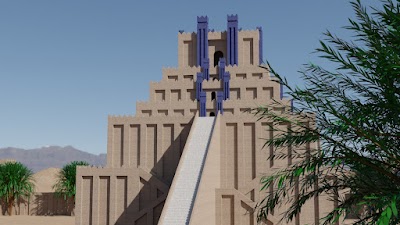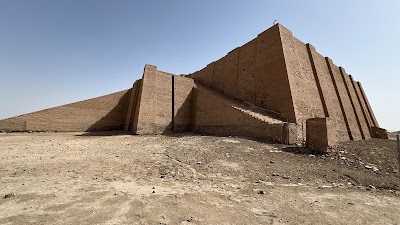Temple of Marduk (معبد مردوخ)
Overview
The Temple of Marduk, nestled within the ancient city of Babylon in present-day Iraq, is a site rich in historical and cultural significance. It provides an intriguing window into the religious beliefs and architectural achievements of the Babylonians. Revered as the chief god of the Babylonian pantheon, Marduk was associated with creation, water, vegetation, judgment, and magic. His temple, known as Esagila—which translates to "temple whose top is lofty"—was a powerful symbol of his importance in Babylonian society.
Constructed during the zenith of Babylon's power under King Nebuchadnezzar II in the 6th century BCE, the Temple of Marduk served not just as a place of worship, but also as a representation of the city’s economic and political strength. The expansive temple complex featured towering walls and grand courtyards, adorned with intricate glazed brick reliefs depicting scenes from Babylonian mythology and daily life. These artistic embellishments provide valuable insights into the religious practices, societal structure, and artistic talents of the Babylonians.
One of the temple's most notable features is the legendary ziggurat Etemenanki, often referred to as the "Tower of Babel." This monumental stepped structure, which rose in seven tiers, was believed to bridge the gap between heaven and earth—a fundamental concept in Mesopotamian religion. Its towering presence underscored the architectural ingenuity and cultural significance of the temple in Babylonian civilization.
The Esagila temple was the epicenter of religious ceremonies dedicated to Marduk. It housed the cult statue of the deity, believed to be infused with Marduk’s spirit. During the New Year festival, one of the most crucial annual events in Babylon, this statue was paraded through the city in a grand procession. This celebration not only showcased the community's fervent religious devotion but also reaffirmed the king's divine right to rule, symbolizing the renewal of life.
An intriguing aspect of the Temple of Marduk is its sophisticated drainage system, which exemplifies the advanced engineering skills of the Babylonians. The meticulous management of water was essential for temple rituals and the upkeep of the sacred space. The complex included canals and reservoirs that ensured a reliable water supply, vital for daily life and imbued with religious significance, symbolizing the life-giving essence of Marduk.
For foreign tourists, visiting the ruins of the Temple of Marduk can be a profoundly awe-inspiring experience. While much of its original grandeur has faded with time, the remnants still convey the scale and significance of this ancient wonder. As you wander through the ruins, you can imagine the splendor of ancient Babylon and gain a deeper appreciation for the cultural heritage that these ruins represent.
Moreover, the site provides a unique opportunity to connect with one of the world's oldest civilizations. Exploring the remnants of the ziggurat and the Esagila sheds light on ancient religious practices and architectural innovations that significantly influenced subsequent cultures. It’s a journey back in time to an era where gods and humans interacted through impressive monuments and elaborate rituals.
In summary, the Temple of Marduk stands as a testament to the religious devotion, architectural brilliance, and cultural richness of ancient Babylon. For travelers, it is a must-visit destination that offers an enriching blend of historical exploration and cultural discovery. As you stroll through the vestiges of this once-magnificent temple, you’ll not only witness the grandeur of Babylon's past but also gain an invaluable understanding of humanity’s shared heritage.





